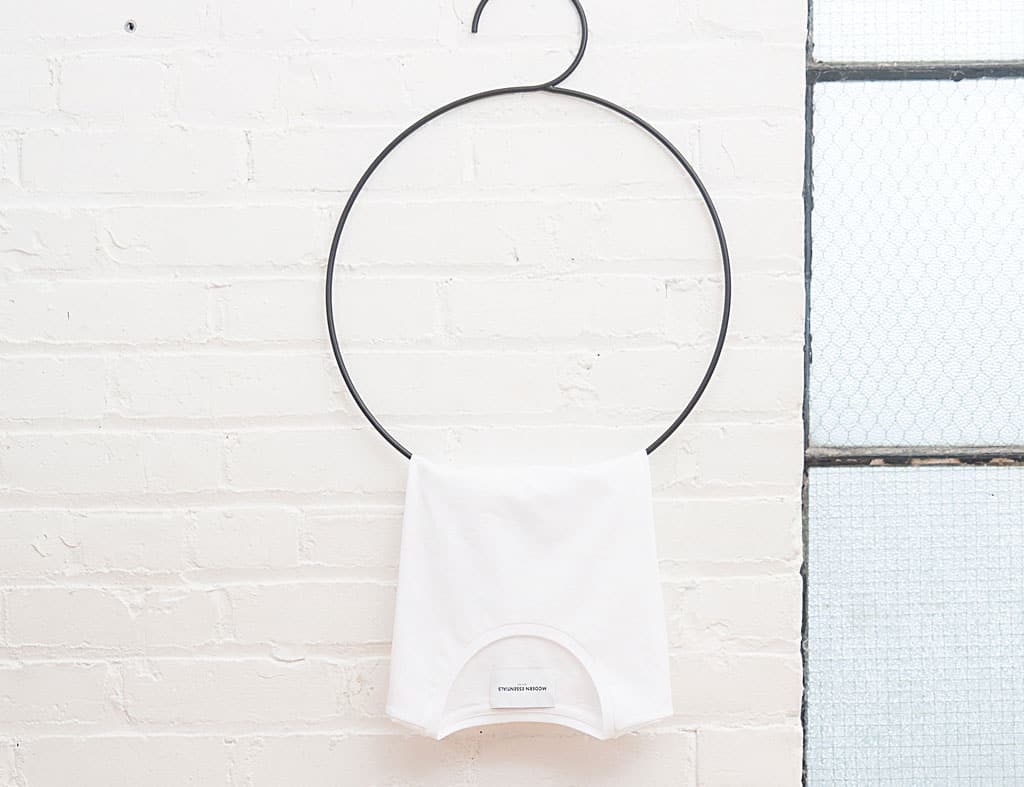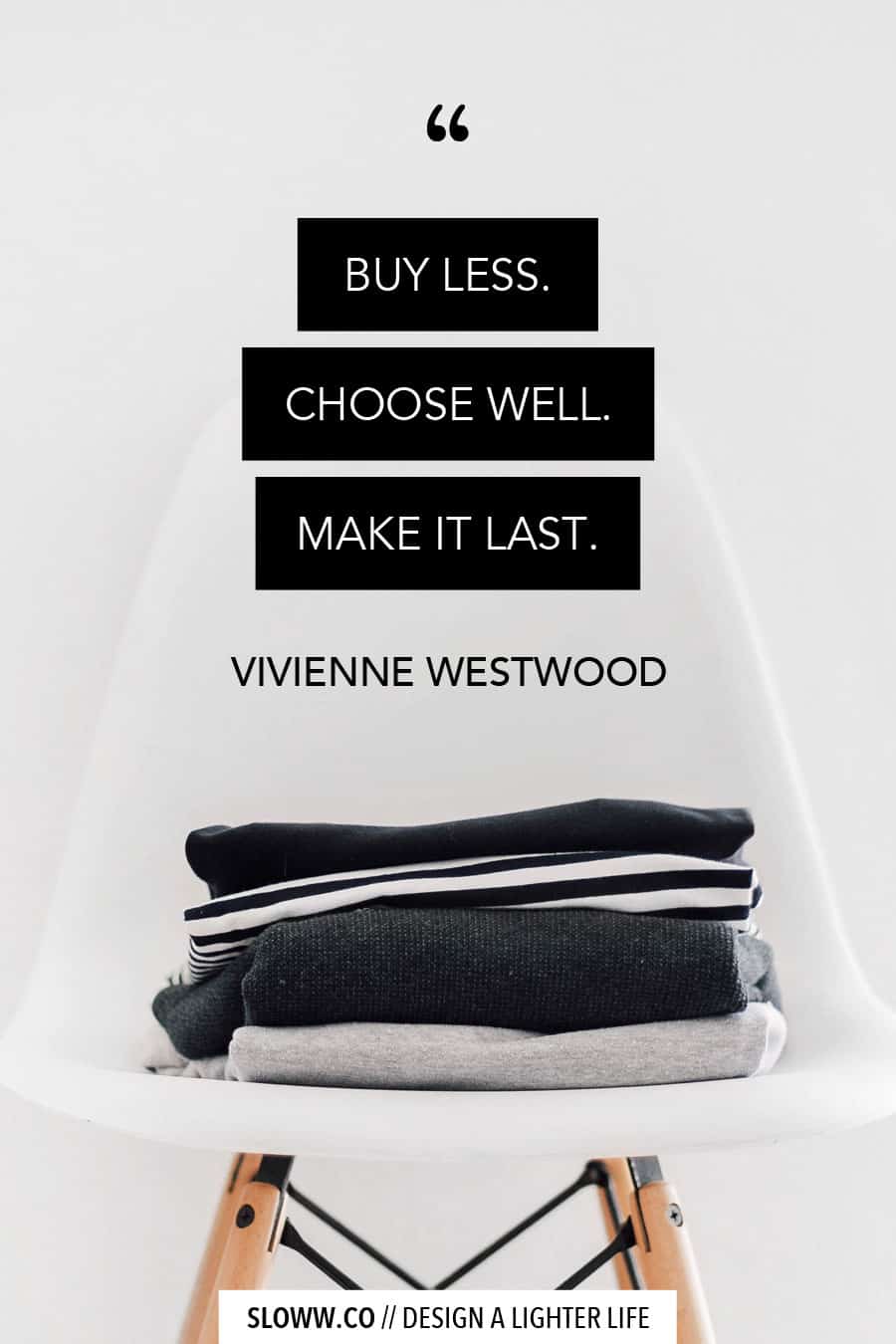Today is Black Friday and Cyber Monday is right around the corner, so I thought a brief dive into slow fashion would be a timely topic.
If you’ve read the slow living post series, you may recall a short overview of slow fashion in the second post: Slow Living 201: A Deep Dive into Slow Living & The Slow Movement.
We live in a modern world that offers us an abundance of choice and convenience. If you’re reading this, then you’re in the half of the world’s population with access to the internet. That also means you have access to a seemingly infinite amount of online shopping options.
It’s easy to shop cheap, fast fashion. And, it’s easy to shop often. But, the choice is also there to shop slow, ethically, and sustainably. Like all things in life, with great choice comes great responsibility:
“Once we know and are aware, we are responsible for our action and our inaction. We can do something about it or ignore it. Either way, we are still responsible.” — Jean-Paul Sartre
Why does this matter?
“Every time you spend money, you’re casting a vote for the kind of world you want.” — Anna Lappé

“Wear confidence. It is the height of fashion.” — Haemin Sunim
What is Slow Fashion?
Many sources define slow fashion by describing what it’s not. For instance, slow fashion is the antithesis of fast fashion. You’ll also see a variety of definitions for slow fashion because it’s been a dynamic and evolving concept over the last couple decades.
Let’s start by thinking about slow fashion in terms of the descriptions of slow living in general. In that case:
- Slow fashion slows down the pace of shopping and consumption to ask the deep (tough) questions.
- Slow fashion is a natural lifestyle choice.
- Slow fashion is conscious and mindful.
- Slow fashion is more timeless than trendy.
- Slow fashion takes a long-term view as opposed to the fast fashion short-term view.
- Slow fashion is about quality instead of quantity—garments that can last years or even a lifetime.
- Slow fashion is purposeful and intentional.
- Slow fashion is holistic and considers the whole product lifecycle.
- Slow fashion is sustainable and doesn’t view products as disposable.
- Slow fashion is ethical and looks at the connections between things—raw materials, the environment, human labor, etc.
And, like slow living, slow fashion is countercultural because it goes against the current societal norms that “more is more” and “faster and cheaper are better.”
Here were the two best quotes I came across while researching slow fashion:
- “Slow fashion is also about returning to a personal relationship with fashion. One where trends and seasons don’t matter, but where your ethics and aesthetics seamlessly unite, and you can escape the stress of constant consumption, focusing on the style that truly appeals to you.” — Emilia Wik, Head Designer at BYEM¹
- “Slow fashion is about designing, producing, consuming and living better. Slow fashion is not time-based but quality-based (which has some time components). Slow is not the opposite of fast – there is no dualism – but a different approach in which designers, buyers, retailers and consumers are more aware of the impacts of products on workers, communities and ecosystems…Slow fashion is about choice, information, cultural diversity and identity. Yet, critically, it is also about balance. It requires a combination of rapid imaginative change and symbolic (fashion) expression as well as durability and long-term engaging, quality products.” — Kate Fletcher (widely credited with coining the term “slow fashion” in 2007)²
Slow Fashion vs Ethical Fashion & Sustainable Fashion
Some of my favorite ways to describe slow living are that it’s conscious, intentional, and holistic. I believe the same characteristics apply to slow fashion—intentionally considering the holistic lifecycle of a product from its ideation, to raw materials, to manufacturing/production, to its supply chain/shipping, and ultimately with consumer use and end-of-life disposal.
There seems to be a lot of confusion between slow fashion, ethical fashion, and sustainable fashion (or eco fashion). This is understandable because there is a lot of overlap between these concepts. To keep things simple, here’s how I’ve seen ethical fashion and sustainable fashion defined:
Ethical Fashion:
- Ethical fashion is often concerned with human and animal rights. As it relates to humans, ethical fashion applies to working conditions, fair wages and treatment, and no child labor.
Sustainable Fashion (or Eco Fashion):
- Sustainable fashion is often concerned with the environmental impact. Opting for fibers and materials that are organic, recycled, or repurposed, limiting harmful chemicals/dyes, reducing energy/water usage and waste, and overall choosing low-impact options wherever possible.
Getting Started with Slow Fashion
As humans, we are all consumers. But, we have choices to make regarding what we consume and how much we consume of it. In recent years, I’ve been making efforts to choose conscious consumption wherever possible.
If you would like to begin being a conscious or mindful consumer when it comes to clothing, here are some ways to get started:
1. Shop Less & Buy Less:
It’s not about buying nothing (although running around life naked is the most sustainable option). It’s not anti-consumption, it’s alternative consumption.
- Buy less each time you shop
- Shop less frequently
- Consider secondhand and vintage
2. When Shopping & Buying:
Remember that your spending is voting for the world you want!
- Avoid fast fashion brands
- Do your homework to avoid greenwashing (brands that say they are slow/ethical/sustainable in their marketing but don’t live it)
- Look for brand transparency (do they give you all the information about their raw materials, manufacturing, supply chain, pricing, etc?)
- Search for ethical and sustainable brands/products
- Consider smaller local brands/businesses
- Buy higher quality that will last longer
- Buy timeless designs and seasonless styles vs seasonal trends (“transcend trends”)
3. Once You Own Something:
- Love the few things you own. If you have less, you can celebrate those few things more.
- Don’t treat anything as disposable
- Consider the product lifecycle to keep things out of landfills (repair, donate, upcycle, etc)
Have you shopped slow, ethical, or sustainable fashion? Let me know how you got started or your favorite ways to shop in the comments.
If you’re interested in more slow fashion, check out these posts:
- I Worked for a Denim Brand — Now I’m a Jeans Minimalist
- How Minimalism Helped Me Stop Buying Clothes in 12 of the Last 16 Months
- Oops Minimalism: How I Spent $0 on Clothing for 6 Months Without Trying

Sources:
- http://www.savant-magazine.com/magazine/2018/4/5/difference-between-slow-ethical-and-sustainable-fashion-4-industry-insiders
- https://theecologist.org/2007/jun/01/slow-fashion




